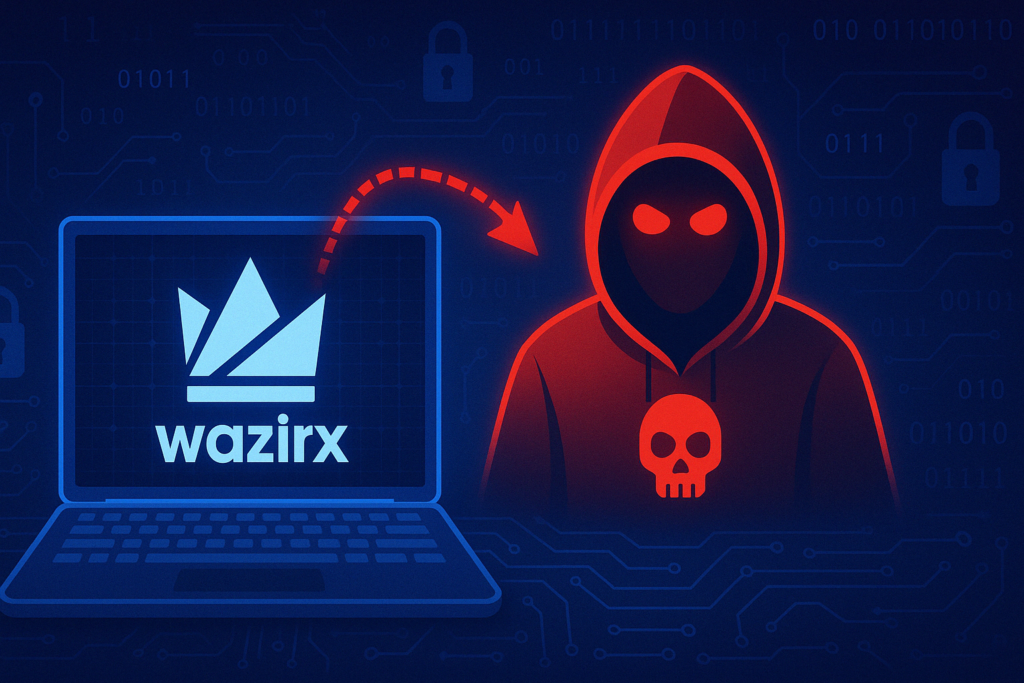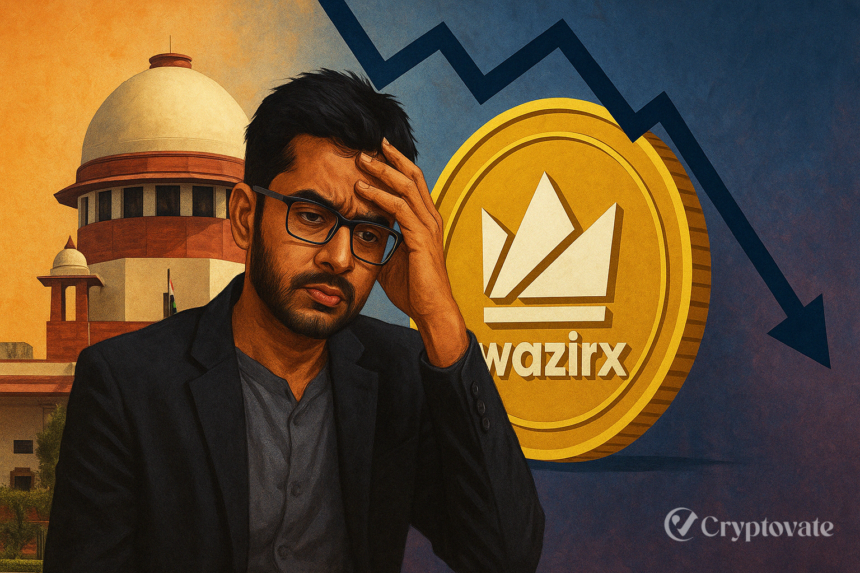– Ad –
| Getting your Trinity Audio player ready... |
In a major blow to cryptocurrency investors in India, the Supreme Court dismissed a criminal writ petition filed by 54 WazirX users on April 16, 2025. The petitioners sought justice following a massive ₹2,000 crore ($234 million) cyberattack on the popular crypto exchange in July 2024. The court’s ruling, which redirected users to approach the Union Government or financial regulators, has left thousands of investors in limbo, highlighting the precarious state of crypto regulation in India. This article explores the implications of the Supreme Court’s decision, the ongoing legal battles, and what lies ahead for WazirX users.
The WazirX Cyberattack: A Devastating Blow
WazirX, one of India’s leading cryptocurrency exchanges, suffered a catastrophic security breach in July 2024. Hackers siphoned off digital assets worth over $234 million, affecting countless users who had entrusted their funds to the platform. The incident sent shockwaves through India’s crypto community, raising concerns about the safety of digital investments. Frustrated by the lack of immediate action from WazirX or authorities, 54 affected users took their grievances to the Supreme Court, hoping for swift intervention.
However, the Supreme Court ruled that it was not the appropriate forum to address their concerns. Instead, it advised users to seek recourse through the Union Government or regulatory bodies like the Financial Intelligence Unit (FIU). This decision has left investors grappling with uncertainty, as the path to recovering their losses remains unclear.
Also Read: WazirX Implements User Account Restorations Following $230 Million Cyberattack
Ongoing Legal Efforts: Hope in the Delhi High Court
While the Supreme Court’s ruling closed one door, other legal avenues remain open. The Delhi High Court has emerged as a key player in addressing the WazirX hack. In October 2024, the court issued notices to the Enforcement Directorate (ED) and the FIU, signaling its intent to thoroughly investigate the matter. In December 2024, it rejected a Delhi Police report that had cleared WazirX of wrongdoing, ordering a fresh probe. The new investigation report is due by February 13, 2025, offering a glimmer of hope for affected users.
The Delhi High Court’s proactive approach contrasts with the Supreme Court’s hands-off stance, underscoring the fragmented nature of India’s judicial response to crypto-related issues. For now, investors are closely monitoring the Delhi High Court’s proceedings, hoping for a resolution that holds accountable those responsible for the security lapse.

WazirX’s Restructuring Plan: A Ray of Hope?
Beyond India’s borders, WazirX’s Singapore-based parent company, Zettai Pte Ltd, is working to mitigate the fallout. In January 2025, the Singapore High Court granted Zettai a four-month moratorium to restructure and recover 85% of the lost funds. The restructuring plan, which has since been approved, aims to distribute recovered assets to users starting in April 2025. This international effort highlights the complexities of resolving crypto disputes across jurisdictions, but it also offers a potential lifeline for investors.
However, the restructuring plan is not without challenges. Users must navigate a complex claims process, and the recovery of only 85% of funds means some losses will remain unrecovered. Nevertheless, the Singapore court’s approval marks a significant step toward addressing the financial impact of the hack.
The Broader Implications for India’s Crypto Ecosystem
The Supreme Court’s decision underscores a critical issue: the lack of a robust regulatory framework for cryptocurrencies in India. While the country has seen growing adoption of digital assets, incidents like the WazirX hack expose the vulnerabilities investors face. Without clear guidelines, users are left to navigate a patchwork of judicial and regulatory processes, often with limited success.
The ruling may serve as a wake-up call for policymakers. The Union Government, which has been deliberating crypto regulations for years, may face increased pressure to introduce comprehensive laws that protect investors while fostering innovation. Until such reforms are implemented, India’s crypto ecosystem remains a high-risk environment for users.
Moreover, the WazirX case highlights the importance of cybersecurity in the crypto industry. Exchanges must invest in state-of-the-art security measures to prevent breaches and maintain user trust. For investors, the incident serves as a reminder to diversify their holdings and use secure storage solutions, such as hardware wallets, to minimize risks.
What’s Next for WazirX Users?
For the thousands of WazirX users affected by the hack, the road ahead is fraught with challenges. The Supreme Court’s refusal to intervene means they must rely on other avenues for justice. The Delhi High Court’s ongoing investigation offers a potential path forward, but its outcome remains uncertain. Meanwhile, the Singapore restructuring plan provides a partial solution, though it requires patience and active participation from users.
Affected investors are advised to stay informed about developments in both the Delhi High Court case and the Singapore claims process. Engaging with WazirX’s official communications and seeking legal advice may also help navigate this complex situation. Above all, the WazirX hack serves as a cautionary tale about the risks of cryptocurrency investments in an unregulated market.
Conclusion: A Call for Regulatory Clarity
The Supreme Court’s dismissal of the WazirX users’ plea is a stark reminder of the regulatory void in India’s cryptocurrency landscape. As investors grapple with the aftermath of the $234 million hack, the need for clear, comprehensive crypto regulations has never been more urgent. While the Delhi High Court and Singapore restructuring plan offer some hope, they are not substitutes for systemic reforms that protect users and ensure accountability.
For now, WazirX users must remain vigilant and proactive in pursuing their claims. The broader crypto community, meanwhile, awaits stronger safeguards to prevent such incidents in the future. As India’s digital economy continues to grow, the government’s response to this crisis will shape the future of cryptocurrency in the country.

















